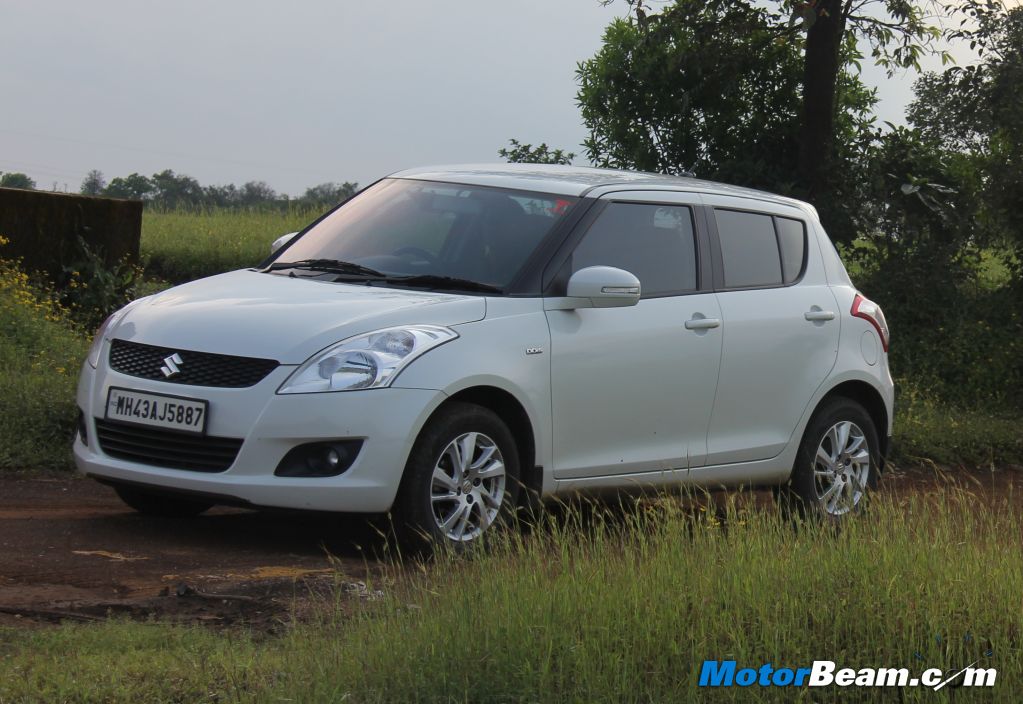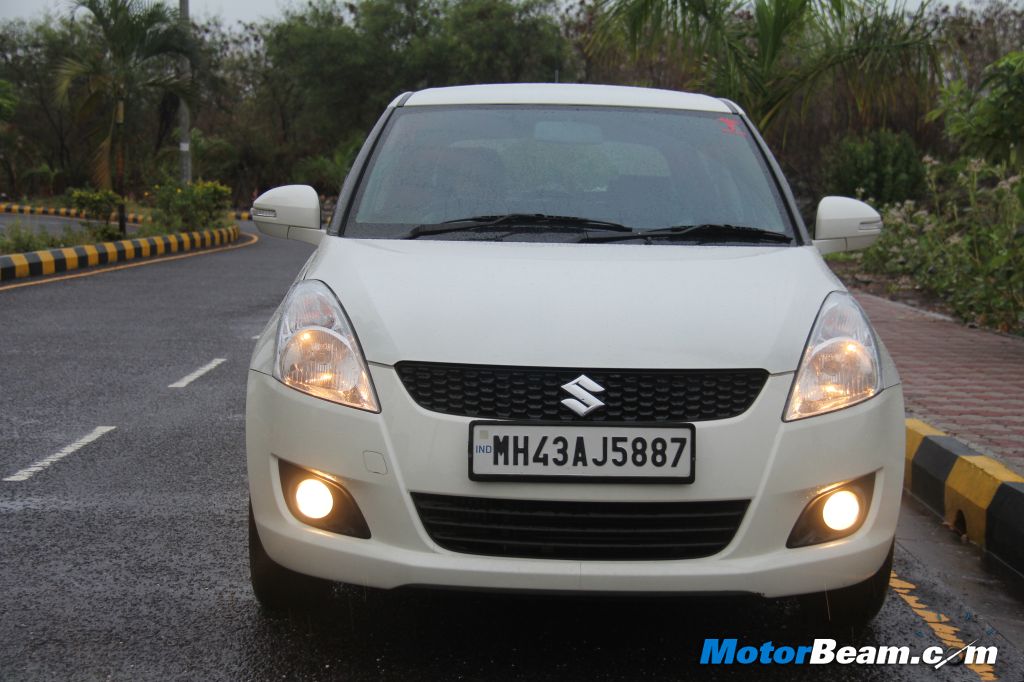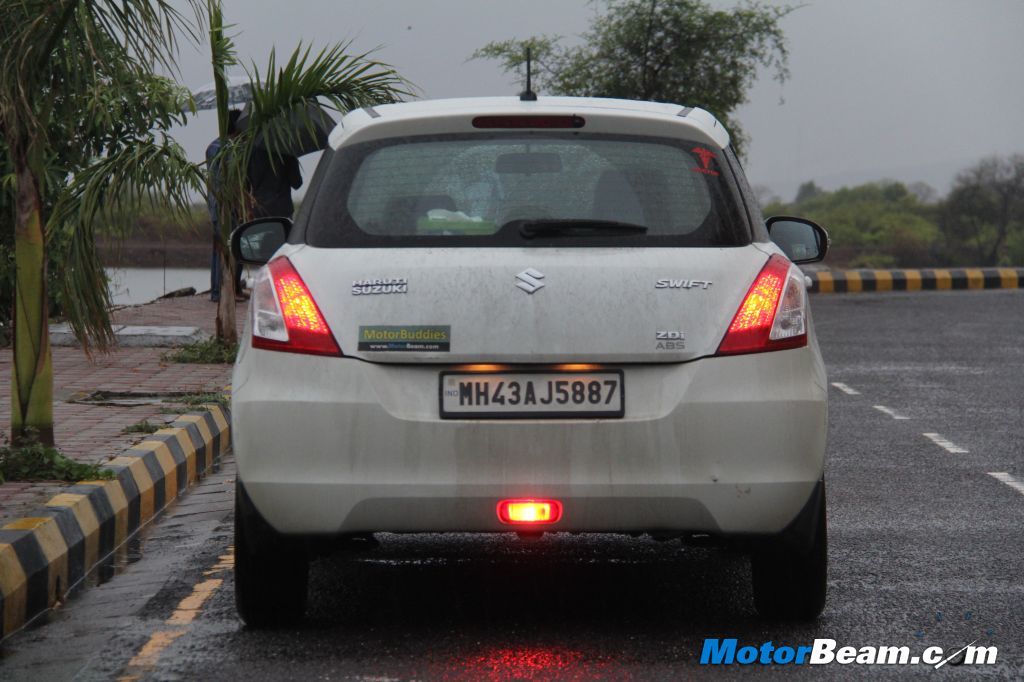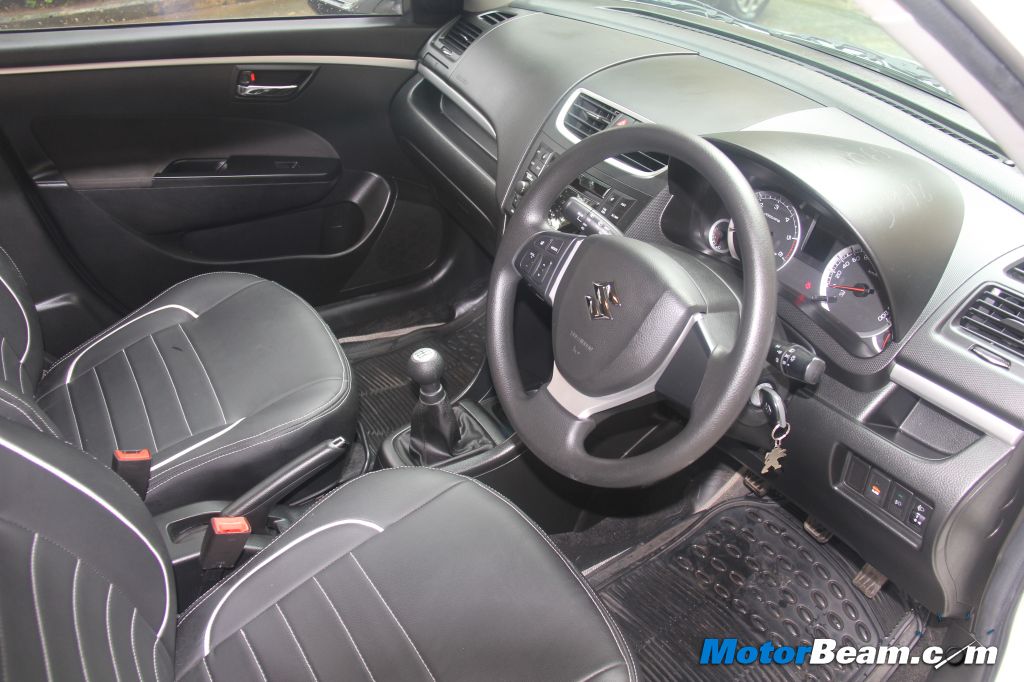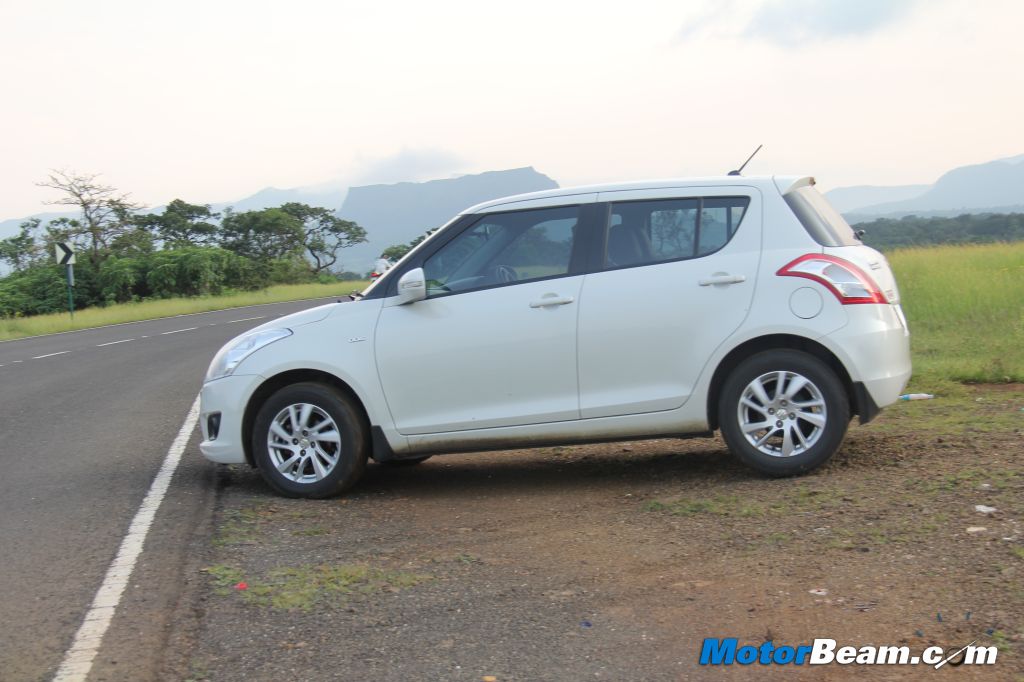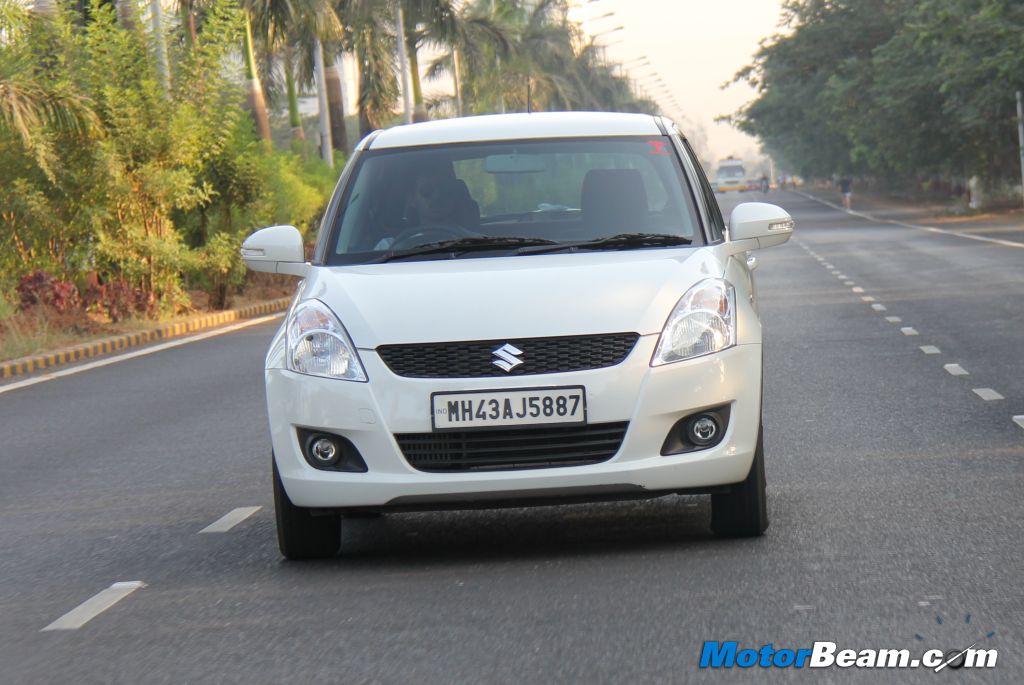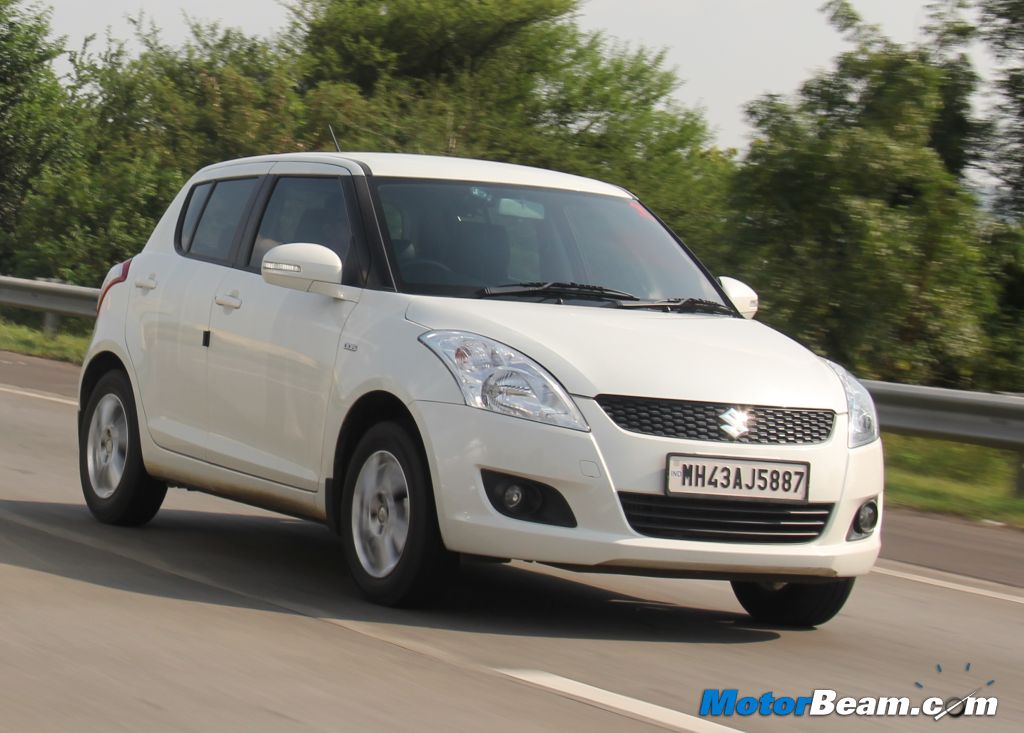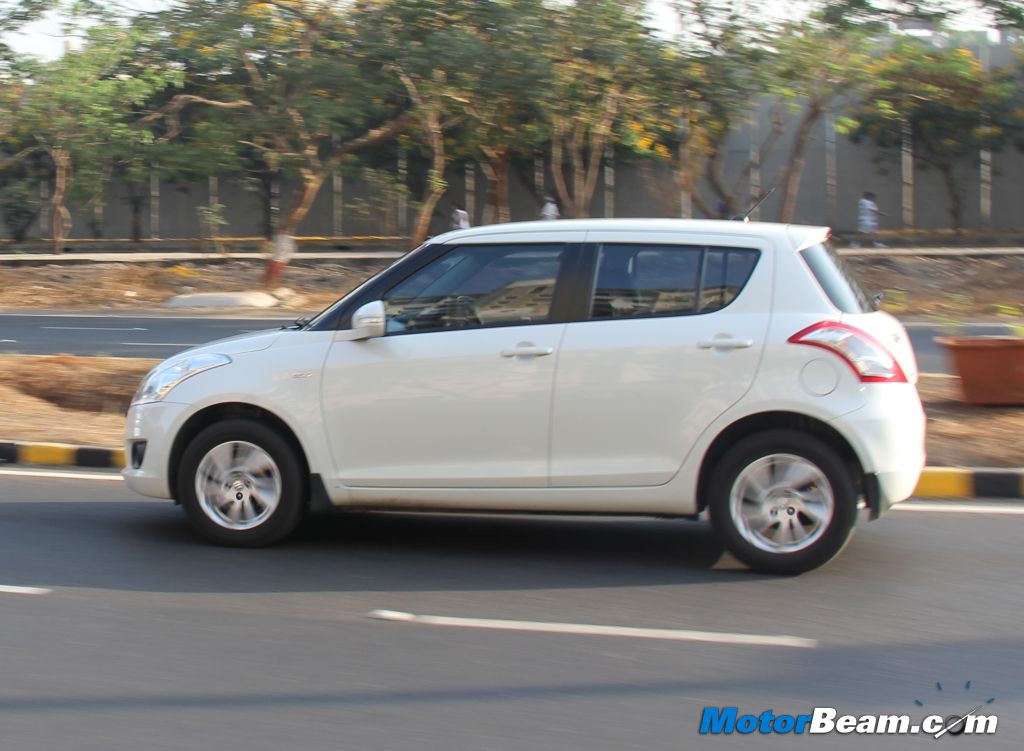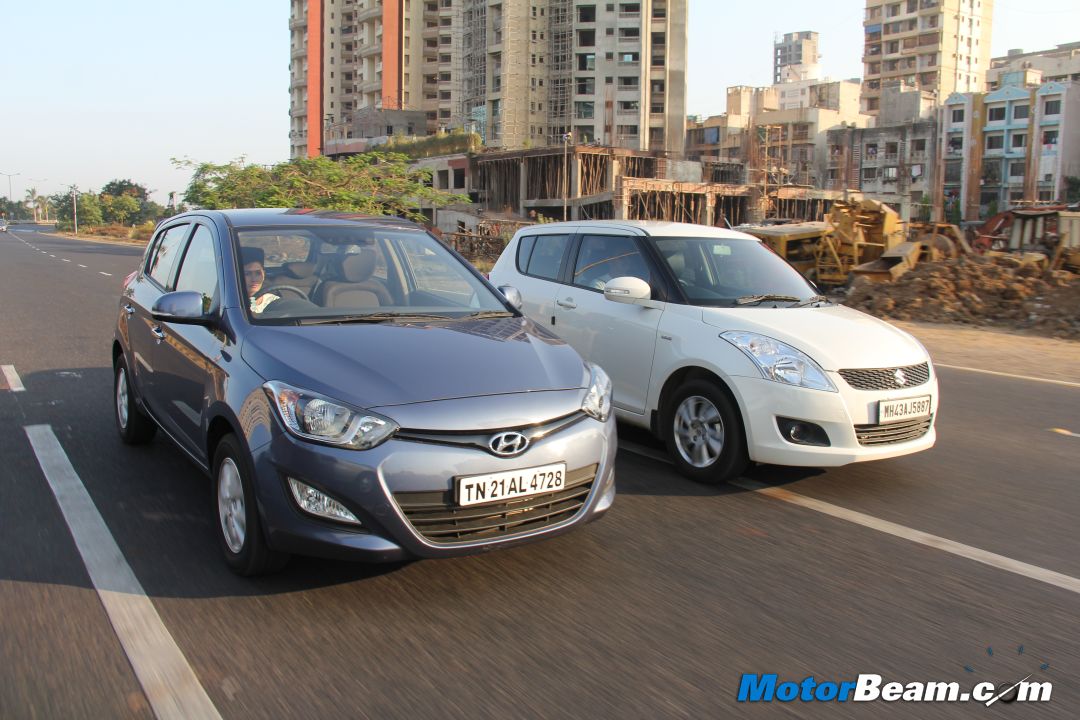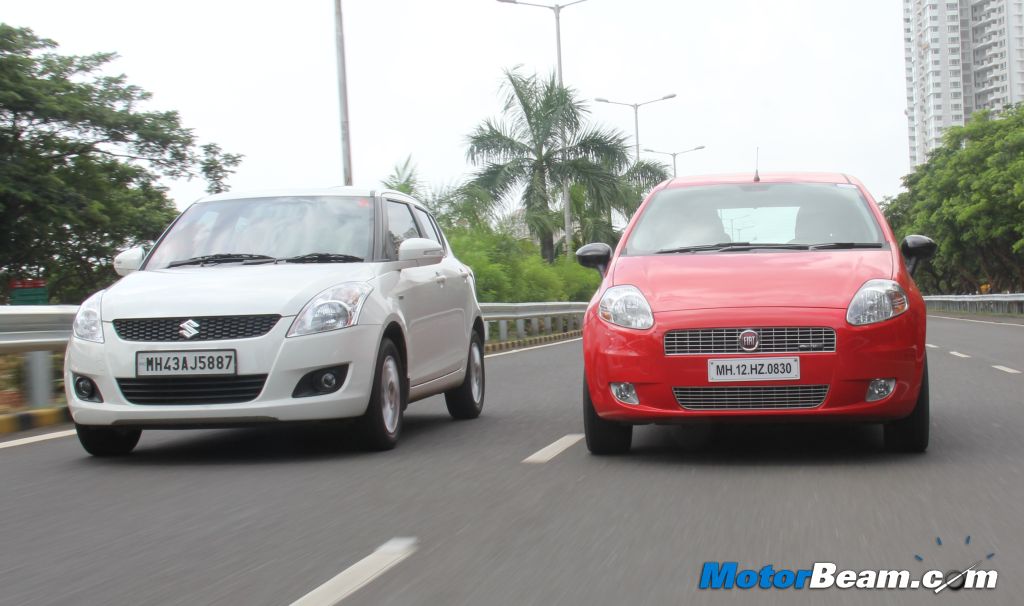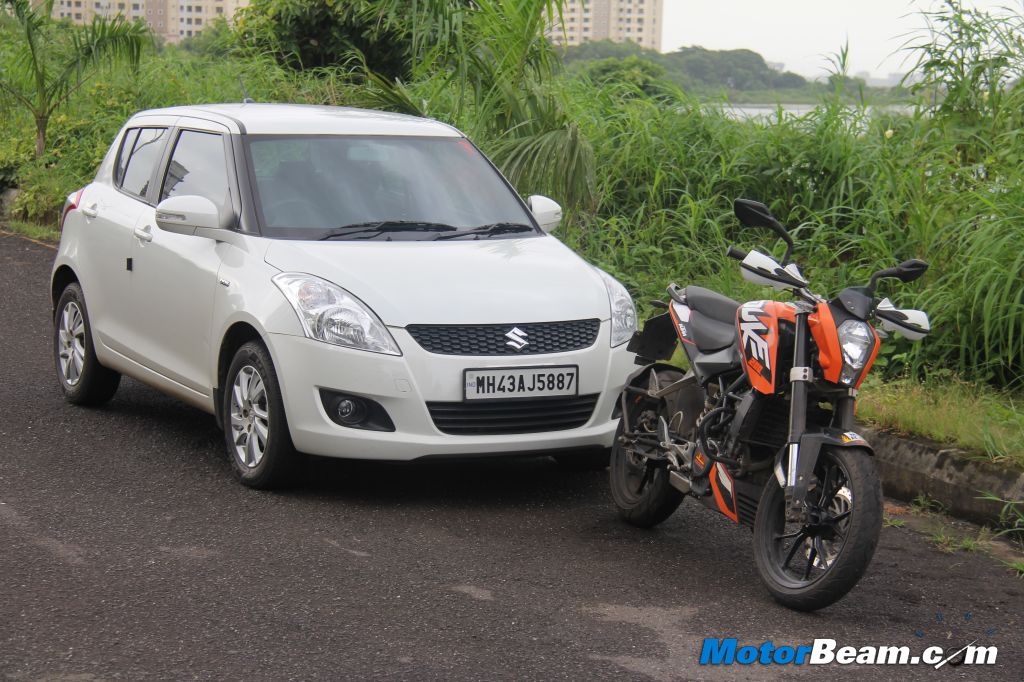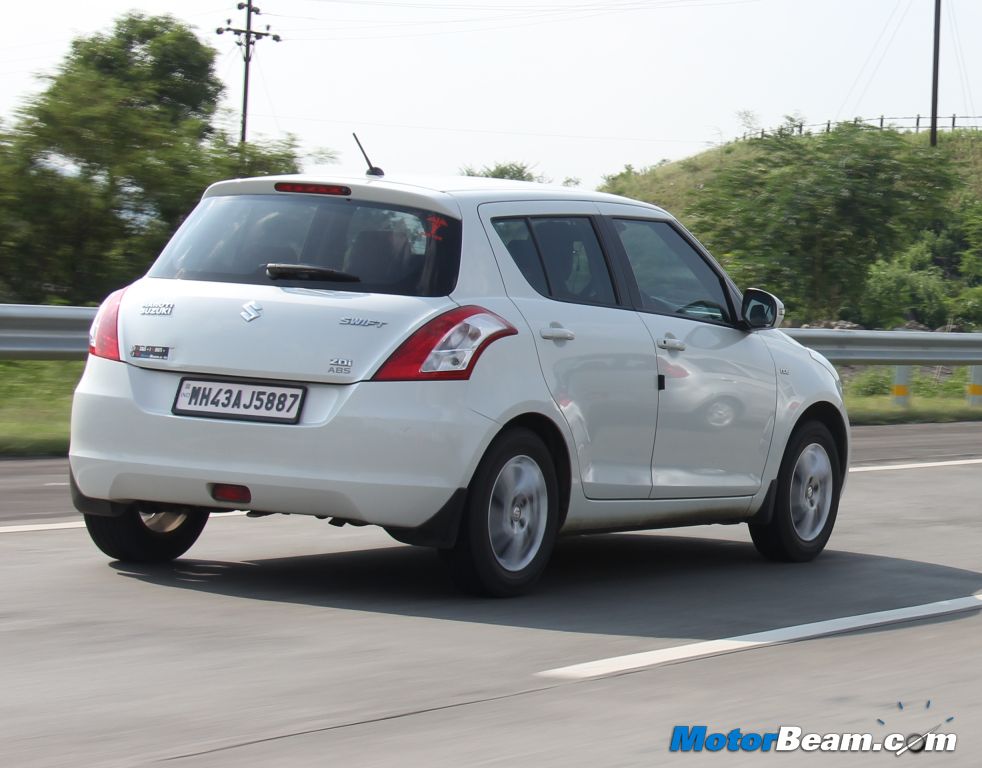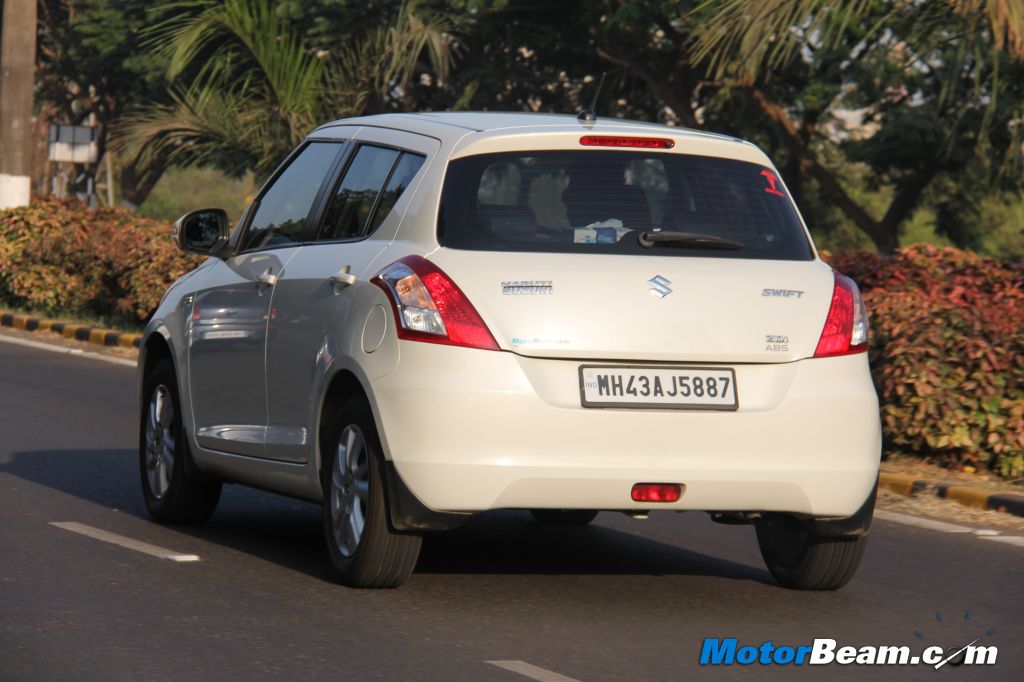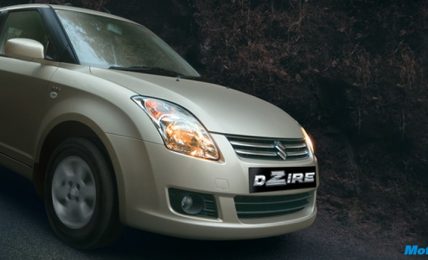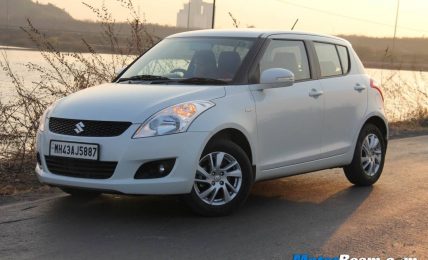Maruti Suzuki Swift Long Term
Car Tested: Maruti Suzuki Swift ZDi
Kms Done: 12,537 kms
Test Started at: 11 kms
Test Concluded at: 12,548 kms
Mileage: 14.74 km/l (mostly city running), 17.2 km/l (best), 13.21 km/l (worst)
Fuel Consumed: 850 litres
Fuel Cost: Rs. 45,860/-
Rs. per km: Rs. 3.65/-
Service Cost: Rs. 5505/-
Major Repair: None
The Maruti Suzuki Swift is a hassle free vehicle to live with.
Since its launch in 2005, Maruti Suzuki has dominated the mid-size hatchback segment with the Swift. In fact, being the segment leader, the Maruti Swift is the benchmark for all other hatchbacks and thus our long term car has been pitched against the competition like the Fiat Grande Punto, Hyundai i20 and the Chevrolet Sail. We had put our old Swift through more than one lakh gruelling kms (HERE) and came out reasonably impressed, especially with the balance of performance and mileage the Fiat sourced Multijet diesel engine offered. Niggling issues like rattling aside, the Swift has established itself with authority in India. When the news about the next generation Swift started doing the rounds in early 2011, we were quite excited to get behind the wheel of the all new vehicle. But does the all new Swift rewrite the rules of the game? We find out over 12,000 kms of daily use.
The exteriors are now much sharper and the new Maruti Suzuki Swift is definitely more pleasing to the eye than its predecessor. The new evolutionary design adds a futuristic touch while retaining the design cues of the original Swift. It appears to be a more mature and bigger car now. While the new design is highly appreciated, the interiors too have been majorly revamped. You now get better quality plastics and the all black interiors look classy. However once you shine it up, it ends up reflecting in the front windscreen which is quite irritating. We don’t recommend use of any dashboard shine whatsoever. The fit and finish has been majorly improved and even after 12,000 kms in this car, we did not experience a single case of rattling, something which was more of hereditary issue with the old Swift. The cabin feels quite rich too.
The front seats are extremely supportive and don’t give you a reason to complain even after long trips. The rear seats are decently supportive too but stay comfortable as long as you do short trips. Over long journeys, passengers complained of their back getting too stiff. The small rear glass does not help matters much. The boot size has diminished with the evolution. Though Maruti has been able to enhance the interior space (rear legroom) by a small margin, the whole process has taken a toll on the boot space. Space is sufficient for a few small sized bags and will be enough if your wife breaks loose over the end of season sales. However, large suitcases don’t make it easily into the boot. You can remove the parcel shelf and make then stand but at the compromise of rear view visibility. The loading lip is too high and heavy luggage has to be lifted to a reasonable height before it can be shoved in.
The climate control works flawlessly and the AC works pretty well ensuring you can chill even on the hottest days. The audio unit has great output for a stock unit and the combination of two tweeters and four speakers works up quite a tune. It supports iPod connectivity, USB, AUX and CD. Bluetooth connectivity would have been the icing on the cake had it been there. The controls on the steering wheel make life pretty easy on the go. Maruti has given a night light in the centre, unlike the previous generation model. Thus, illumination at the front is low and reading at night for people at the front can be a task. The multi-information display shows various parameters such as range, mileage and real time fuel consumption. Though we really appreciate such features, truth is that they are not usually accurate. Once you have fuelled up (full tank), the range is quite accurate, however, the moment the low fuel warning comes on, the range goes blank. The point of this is to have a rough estimate on how many kms you have under you belt until the next fuel station! isn’t it? On the upside, the low fuel warning is not only displayed on the instrument cluster but also sounds a chime to get your attention.
India’s most popular hatchback has been with us for quite some time now and our experience has been quite mixed. While the hassle free ownership experience continues to be a strong point of this Maruti Suzuki vehicle, the new Swift has disappointed us when it comes to driving experience. The new Maruti Suzuki Swift is lighter than before and offers similar power output but somewhere the ‘You’re the fuel’ tagline becomes less prominent. Everyone knows what a hoot to drive the old Swift diesel was. We had put in more than 1 lakh kms on the old car and were expecting similar levels of magic with the newer version. But in the interest of comfort and soberness, Maruti Suzuki has taken the soul out of the Swift. You no longer get the kick in the pants feel when the turbo kicks in. Power delivery is now linear and there is definitely no rush as before. Low end grunt is poor and it can be a task negotiating stop go traffic but this engine comes strong in the mid and high end of the rev band. The clutch is decently light and has remained that way, no sign of clutch wear yet.
Toning down the power delivery would have been acceptable had the mileage improved. At least on paper, it seems to be justifiable since the new Swift is more fuel efficient then its predecessor and has an impressive ARAI certified mileage of 22.9 km/l. Come to the real world and it’s a surprisingly different story. While our old Swift returned 18 km/l at its time of retirement, the new model only does 16 km/l (same driving cycle). Even on the highway, the best we got was 17.3 km/l while the worst was 13.21 km/l. After the 10,000 kms service, the mileage has marginally improved after we switched to synthetic oil (more on that later). NVH levels are far better and even high speed stability is impressive.
We didn’t face any brake issues as reported by many owners. Braking performance is good and has not really deteriorated much. The ABS keeps things in control but the tyres have lost grip way sooner than expected. The handling continues to please although the stock tyres are below average. Our car came shod with MRF ZVTV 185/60/15 tyres. Since the odometer ticked past 5000 kms, the tyres have been screeching away to glory on sharp cornering and braking. The cars equipped with Goodyear tyres are reported to be far better in this regard. Ride quality did not give us any reason to complain either although it’s a bit on the stiffer side.
The light steering makes it a boon in city conditions and weighs well as speeds increase but does not feel as precise as you would expect. You can push this car around corners and come out with a smile on your face. The fun to drive factor, though toned down, is still there in the new Swift. One issue we faced was that at standstill speeds the steering suddenly feels too heavy and this seems to be an inherent issue in the new model.
Maruti service is the reason why many opt for a Maruti vehicle and our experience at the service centre has been fantastic throughout. Maruti now gives you an option of using synthetic oil which is sourced through the company itself. Obviously it is more expensive than the mineral counterpart but there is a significant difference in the performance and mileage after opting for it.
Our long term Maruti Swift has visited the service centre for routine service as summarised below –
First Service
Odometer Reading – 1166 kms
Work Done – Engine oil change (15W40 Shell – Mineral Oil), oil filter and wash concentrate
Cost – Rs. 740/-
Second Service
Odometer Reading – 5676 kms
Work Done – General checkup, screen wash concentrate, handbrake setting
Cost – Rs. 15/-
Third Service
Odometer Reading – 10,182 kms
Work Done – Engine oil change (Mobil 1 Synthetic), cabin air filter change, screen wash concentrate, oil filter, rear fog lamp bulb replacement.
Cost – Rs. 4750/-
Total cost of service till 10,182 kms – Rs. 5505/- (difference in cost between synthetic and mineral oil is approximately Rs. 450/- per litre).
The Swift also happens to be a hot cake in the second hand car market and in the last 1.5 years, the cost of the vehicle has shot up by nearly a lakh. For Swift owners, it’s nothing less than good news as the resale value also goes up proportionately. The ZDi variant is loaded, but at a price of Rs. 8.25 lakhs (on-road, Mumbai), it doesn’t come cheap. What you do get at this price is a fully loaded hatchback with most of the bells and whistles, quality interiors and balanced dynamics. The new Swift offers a better ride quality than its predecessor and although not as much fun as before, it is lively to drive. Factor in the peace of mind you get from Maruti Suzuki’s wide service network and you realise why the Swift has dominated the market since day one. The Swift is thus a car you can’t go wrong with and the new model is more polished all around, making it still the pick in its class.
The Maruti Swift excels in most regards which makes it such a hot favourite in the hatchback segment.


